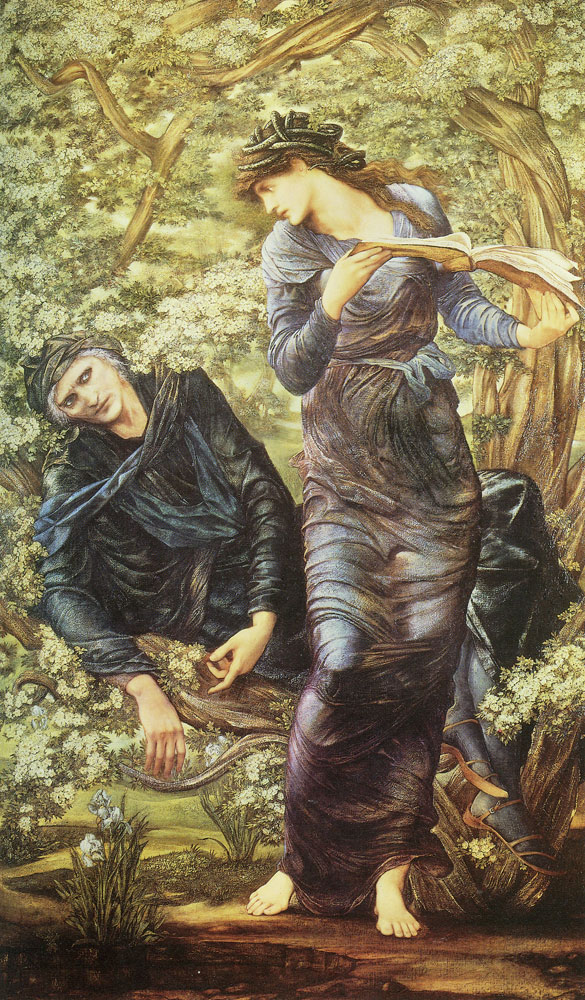
My eye is drawn to the pair of eyes in the painting that belong to Merlin. His gaze is one of obsession, and the viewer knows he is instantly drawn to the woman that stands before him, but also of despair. The tilt of his head coupled with the slumped position of his whole body emphasises his complete enthrallment and ultimately his beguiling. Perhaps he is even trying to reach out one of his hands to touch her, but she is constantly moving out of his grip, shown by her contrapposto stance. His eyes are white, further suggesting some enchantment or spell has been cast upon him, to lure him in. The way the artist has shaded the eyes with a darker colour around the white emphasises his unblinking stare, reinforced by the deep line of furrow on his brow. As a painting, this is a snapshot in time and those eyes of Merlin will never be shut. For the rest of time he will be constantly staring at the person who is just out of his reach.
As a Pre-Raphaelite painting, this piece is rich with symbolism. Surrounding the two figures and engulfing the rest of the pictorial space is nature, particularly the hawthorn bushes that Merlin lies within. Hawthorn is associated with witchcraft, its innocent white flowers hiding vicious thorns and it is surrounding Merlin in a circular motion, literally trapping him in a deceptively soft yet dangerous embrace. There is no sky, no depth, no space: the branches form a Gothic arch above the figures in a parody of a church. The iris in the foreground of the painting has a variety of meanings, from faith and hope to a connection with heaven. Merlin's hand is reaching towards it but he has not the strength to grasp it and the iris stands forlorn, hardly even real without a reflection in the pool beneath.
Burne-Jones has drawn the folds in the clothing of Merlin and Nimue not with extreme care and delicacy. It adds to the sense of the wind blowing through the canvas and ruffling the woman's draperies. This also links to the way she is standing, her whole body tilted towards Merlin, but yet she is walking away. She has all the movement and power which he lacks, which she has taken from him. She is strong and vertical, he is slumping down to a horizontal. But then you come back to the eyes and realise there is still some strength left.
Comments
Post a Comment